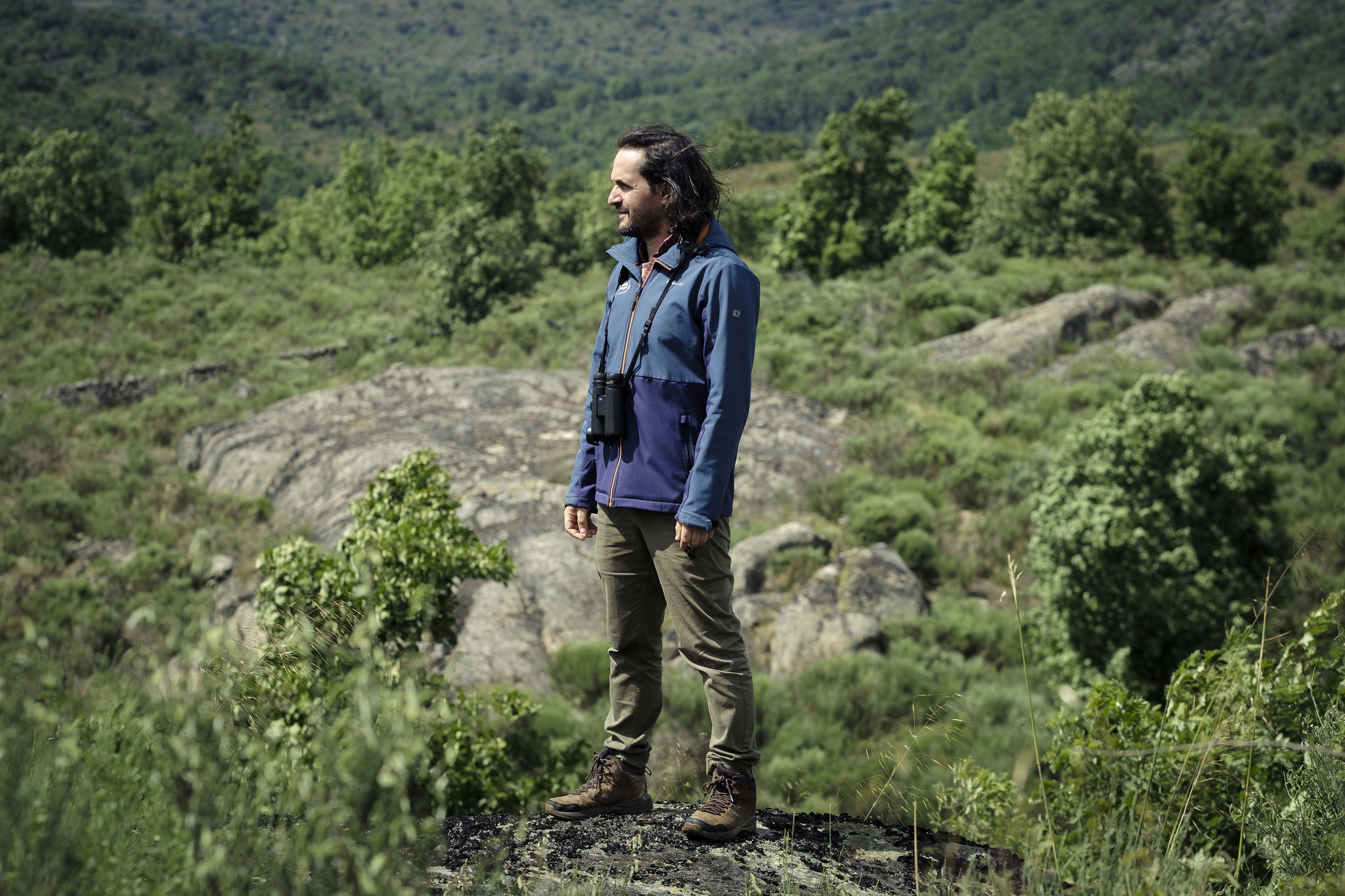At the beginning of 2024, we launched our new magazine Wild 2023, which presented all the developments in our work over the past year. Our team leader Pedro Prata gave an overview of this journey in the magazine’s editorial, which we are now publishing in open format. Over the next few months we will gradually share the various news items and articles that make up this magazine.

Bruno Navarro (1978 – 2021), the late president of the Côa Parque Foundation, had a huge smile on his face and his eyes sparkled with enthusiasm when I told him that Rewilding Portugal was planning a major festival of land art along the entire Côa River, to revive the art of light that the Archaeological Park has safeguarded since time immemorial, to which he quickly replied “Let’s do it!”. It was because of this certainty that we remember him, dedicating the CÔA – Corridor of Arts festival to his memory.
What seemed simple to both of us, there in that room above the mouth of the Côa, and as beautiful as the engravings that adorn the banks of the river we knew so well, became a marathon of logistics and programming that ended in incredible success. To make it happen, the commitment of the entire Rewilding Portugal team and especially the programming team was essential, as was the support of the local municipalities and partners. Without all of them, the artists and the public, the ideas that Bruno and I thought were fantastic would never happen. But that’s how CÔA – Corridor of Arts came to be.
We invited six of the more than 180 candidates to build a artpiece along the banks of the Côa that would mark the landscape. With simple rules, it had to be built with natural materials and respect their decay. It should be integrated into natural processes and influence them. And it had to be built with the support of the community, however the artist defined community.
During February and May, everyone thought up, collaborated on and built a sculptural, ritual and performative piece integrated into the six special locations in this great valley. From the gardens of Sabugal with the villagers dancing over spring, to the infinite cone in Vale Carapito rewilding area pointing towards the castle of Vilar Maior. A wicker log embracing the ruins of the ancient Termas da Fonte Santa in Almeida decorated with Rorschachs made by ASTA members, and on the opposite bank an anthropomorphic megalith standing out in the landscape of the Ermo das Águias rewilding area in Pinhel. Passing by a museum dovecote of Palaeolithic memories in the Faia Brava Reserve and finally a chain of knots made from pruning vines and cherry trees on the best terrace in the whole of the Côa, at the Côa Museum. The artists Rumen Dimitrov, Marcelo Moscheta, Elparo, Gaspard Combes, Antony Lyons and Michèle Trotta are the latest artists of light in the Greater Côa Valley.
This form of artistic expression thus returned to its natural habitat of the wild that still inhabits this great territory. With it came a whole program of music, dance, cinema, photography, theater, etc. that filled an entire month, every day of July, from Sabugal to Vila Nova de Foz Côa, passing through unique places along the Great Route of the Côa Valley. There were more than 100 shows, with more than 8,000 people visiting and taking part in the festival, in more than 200 hours of events and programming. It will hardly be possible to recreate such an artistic force in the Côa in years to come, but its mark will remain forever.
This cultural and natural buzz around the landscape has definitely put this part of the country on the map. It has invited different audiences to share interests and experiences, brought the city to the countryside and the countryside to the city, without losing the essence of either party and adding a new perspective on territorial cohesion.
These are also layers of the integral and holistic work that Rewilding Portugal does on the territory of the Greater Côa Valley. Nature, wildlife and the territory’s iconic species are the essence of what we do on a daily basis. But the reflection this has on people’s lives, whether in the economy, behavior, culture or art, are the indelible effects of a richer environment that we should be proud to have here.
However, we didn’t get richer. We lost a significant amount of money on the festival’s balance sheet. We fulfilled our obligations to all the suppliers, programmers, services and artists that made up the festival. We exhausted the energy of a large team, but we feel we have done our duty and are filled with happy memories. The next edition has yet to be scheduled, we need to finance a new venture of this scale and, above all, bring the people, culture and natural world of the Côa even closer together in the form of a celebration of the beauty that is immemorial here, past and future.
That’s why I’d like to invite all those who follow Rewilding Portugal’s work and see themselves in our way of intervening ecologically, socially and culturally to become patrons of Rewilding Portugal’s Patreon – https://www.patreon.com/rewildingportugal – and know that if we reach 1000 patrons by the end of 2024, the CÔA – Corridor of Arts triennial will take place in 2026.
Wild Greetings!
by Pedro Prata
Rewilding Portugal’s Team Leader